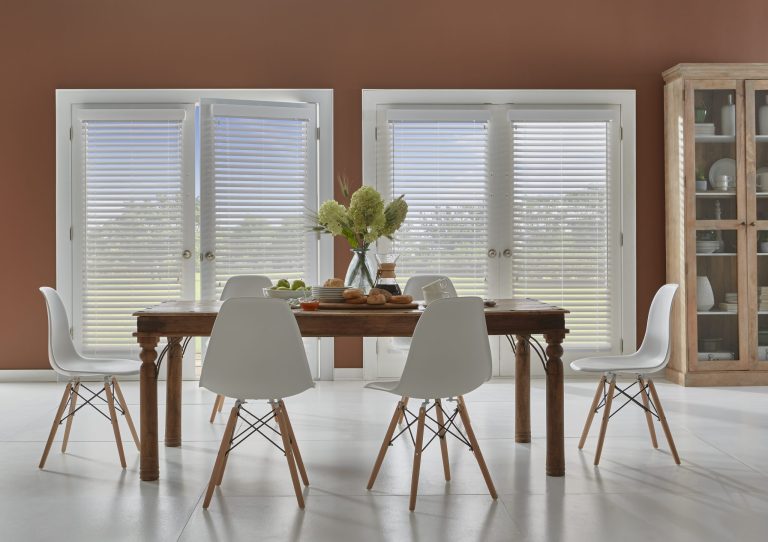
Choosing the color of your blinds can be a complicated decision. There are several factors to bear in mind when choosing color. Most often, you’ll want to go with blinds that match the wood stain or painted trim in the room you’re decorating, but things are never as simple as they seem. So, what color of blinds should I choose? – you might ask yourself.
What Color of Blinds Should I Choose?
In this article, we’ll explore the different color blinds available and highlight a few things to consider when choosing a particular color.
Color Basics
The first thing to bear in mind when choosing blinds is how long you plan to keep them. If you like to redecorate but wouldn’t want to change the blinds or you’re planning on selling your home in a few years, your best bet is to go with natural colors that will match the home as well as your style for years to come. These will often be white, wood stained or off-white looks that complement the trim in the home.
If you choose to install shutters, the trick is to match your woodwork so closely so that the shutter and the frame appear to be one piece. The most commonly chosen colors for mini-blinds, for example, are white and off-white. When it comes to wood blinds, white, wood stain or off-white to match the woodwork of the room is what’s most fashionable and neutral. Neutral colors are also your best bet for Silhouettes and Luminettes. If you’re choosing honeycomb, roman shades or woven woods, there are plenty of colors and patterns available. The main takeaway when it comes to these is to pick colors and designs that match your décor. You also want to consider when you’ll redecorate and if you will be changing your blinds at that time.
Tips to Help You Choose
Dark Blinds/Mini Blinds
Often, all you need to do when choosing the color of your blinds is to consider a few things. First things first, wood blinds or mini blinds will easily show a lot of dust. To make dusting easier, use the brush vacuum attachment. If you don’t want to deal with dusting and cleaning blinds, you may want to choose honeycomb shades, woven woods or roman shades.
Brightness
Light blinds have a bright feel because they let in more light. They also make the room look larger. Dark blinds, on the other hand, give the room a cozy feel. They help to keep out more light and are easy to look through.
The Outside Look of Your Home
While there’s nothing inherently wrong with having different blinds in different rooms, the last thing you want is for the blinds to look so mismatched from the outside of the house. Try to create a fairly uniform look for windows that can be seen at the same time.
Bottom Line
With the tips mentioned, you should be able to answer the question: what color of blinds should I choose? Ultimately, it boils down to personal preference when you’re choosing amongst the types of curtains and blinds. Most people will rarely even notice the color of your blinds so don’t stress out. Just go with what you like and trust your gut. Alternatively, you can ask for advice from a window fashion professional such as the experts at Rapid Blinds or interior designer.
Some blogs are written by authorized members of our advertising team for marketing purposes only. Some content may not correctly depict product specifications and may vary depending on product. For more information please call our sales office.
"Great quality and value for money. Installers were on time, finished the install quickly, gave us instructions on how to use. Very satisfied."



















